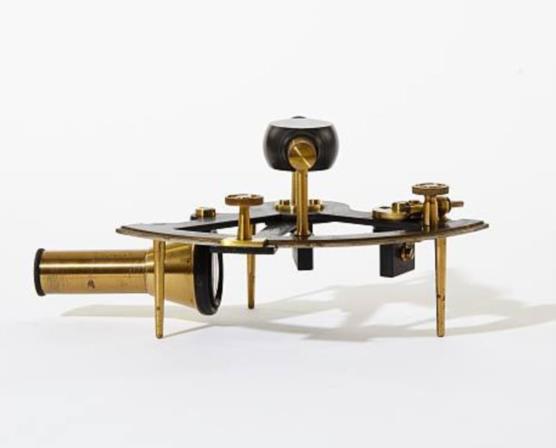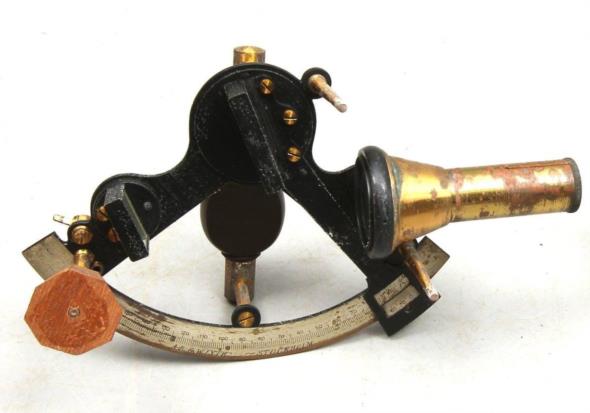
NavList:
A Community Devoted to the Preservation and Practice of Celestial Navigation and Other Methods of Traditional Wayfinding
From: Frank Reed
Date: 2017 Sep 17, 13:39 -0700
Stan's comment on the unusually large angular range of the USN Mk II (mark two) sextants which were standard during the Second World War reminded me of a recent inquiry in the Facebook celestial navigation group regarding a sextant by G.W. Lyth that was up for auction recently in Sweden. See the attached photos. The first photo on the website for the auction made it difficult to tell that the device was actually a type of sextant. Another auction site had images from more viewpoints which made it clear that this is a very small sextant probably used for surveying work and not intended for marine navigation. I estimate that the radius of the arc is around 10cm (four inches). There are no sun shades. It has a simple vernier for reading the angle with a nominal precision of 5 minutes of arc but realistically probably no better than 10-15' accuracy. And as you can see in the photo, it has an angular range of at least 165° and maybe all the way to 180°, though not actually usable to that limit, making this a true "quadrant" (with a 90° sector of a circle leading to double that angle in reading thanks to the double-reflection principle). The terminology is confusing and ambiguous here since the word quadrant traditionally refers to an instrument that measures up to 90°, which is called an "octant" today if it's double-reflecting. So we can just call it a sextant with an unusually large range and call it a day.
Frank Reed








